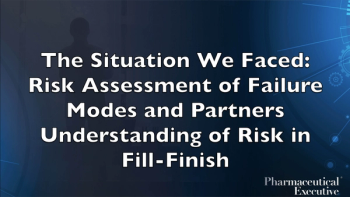
Leveraging Social Media in Pharma
In this Q&A, VP of Crisis Intelligence at Crisp discusses potential crisis points for the pharmaceutical industry.
As VP of Crisis Intelligence at Crisp, Emma Monks heads up a team of consultants and researchers who help Crisp’s clients with their crisis preparedness, social and wider web monitoring strategies, issue escalation trigger points and maps of internal stakeholders that need to be made aware of potential crisis situations when they arise. The team’s researchers stay on top of both direct and indirect sources of potential crises that manifest through such things as shifting societal outlooks and values.
Q. As businesses modernize, social media is an essential part of our lives. Why is it beneficial for pharma brands to have a social media presence?
Emma Monks: The Internet has transformed healthcare-we book appointments, purchase both over-the-counter and prescription drugs, and 80% of us search online for health information. If the Internet and social media are where consumers are, it’s where pharma also needs to be in order to engage with those consumers. Pharmaceutical companies need to build trust with the consumer in order to change the negative public perception of the industry and that is a challenge for an industry that has traditionally been quite opaque and that also operates within strict regulatory rules.
Q: Why have so many pharma brands taken a cautious approach to leveraging social media?
EM: Regulations from the FDA, HIPAA, and the ASA in the UK mean navigating a minefield of what content can be published and that is challenging. Add in layers of sign-off before content is published and the idea of maintaining a vibrant social media presence can be daunting.
Pharma is also a risk-averse industry so, historically, it has been easier for companies to simply avoid the possibility of a compliance breach by not leveraging social media as part of their suite of marketing tools. However, a growing number of pharma companies are realizing that as long as they montior social media, and that could mean through a monitoring service partner, for content breaches and is reliably identifying and alerting drug and safety teams to adverse events and other reportable issues, then they can have the confidence to engage with social media campaigns.
Q: What types of harmful content are most prevalent for pharma companies?
EM: Rumor represents a menace to pharma brand safety and value. Hyper-connectivity and the anonymous nature of the Internet make it very easy for anyone with malicious intent to spread false information about a brand, its products, or even its employees. Harmful rumors have been shown to result in loss of sales and market value in many industries. Pharmaceutical companies are particularly susceptible to the creation of false information around the long-term side effects of drugs, as we have seen with the increasingly powerful anti-vaccination movement.
The pharma industry, traditionally not in the public spotlight, may also find itself the poster child of values driven activist campaigning on such issues as drug pricing and accessibility, water pollution, and industrial emissions.
Q: What are a few ways pharma brands can utilize social media while remaining compliant with HIPAA regulations?
EM: Patient stories are compelling for busting stigmas around certain conditions, for example, Irritable Bowel Syndrome, or for enabling the sufferers of rare conditions to feel less isolated and misunderstood. The pharma company simply has to ensure that they comply with HIPAA by getting written consent from the patient in advance to share their personal health information and any images or videos of them that are to be used in the campaign.
While drug branded pages are the obvious choice to broadcast information on a specific drug, they are not very successful for patient engagement. Savvy companies can turn to unbranded communities, often orbiting around a particular condition, as a venue for sufferers to reach out to peers, share experiences, feel empowered and less stigmatized. They do, however, need a solid community management plan and constant tending-the pay-off is that they are ‘sticky.’ Patients aren’t engaging with a brand, they’re joining a community and becoming part of something, and the pharma benefits from the halo effect of that.
Twitter is a great platform for keeping patients up-to-date with news and information about their condition, breakthroughs in treatment, and charity and community events.
Drug pricing is the biggest source of consumer dissatisfaction against pharmas, according to surveys, and much of this feeling may be due to lack of knowledge about the effort and investment it takes to create a new drug. Youtube can be a fantastic platform for creating video that takes consumers through the drug creation journey from R&D through FDA approval and eventual marketing in order to inform them about the work that goes into new drugs and therefore the pricing rationale.
Q: How can pharma brands mitigate online risks and monitor for harmful content on social media?
EM: It’s essential that brands have a service in place that enables them to be the first to know, and therefore act, on potential issues. The ideal service is 24/7/365 and blends artificial intelligence to ingest and triage large amounts of data, with human intelligence to review the potentially harmful content and make informed and actionable decisions. We call this blend Extended Intelligence. Such a service should be able to meet all needs-removal of undesirable content appearing on brand owned social media pages or adverts, reporting of content that breaches regulations and identification, and rapid alerting of harmful content that poses a risk to brand value and perception
Newsletter
Lead with insight with the Pharmaceutical Executive newsletter, featuring strategic analysis, leadership trends, and market intelligence for biopharma decision-makers.





